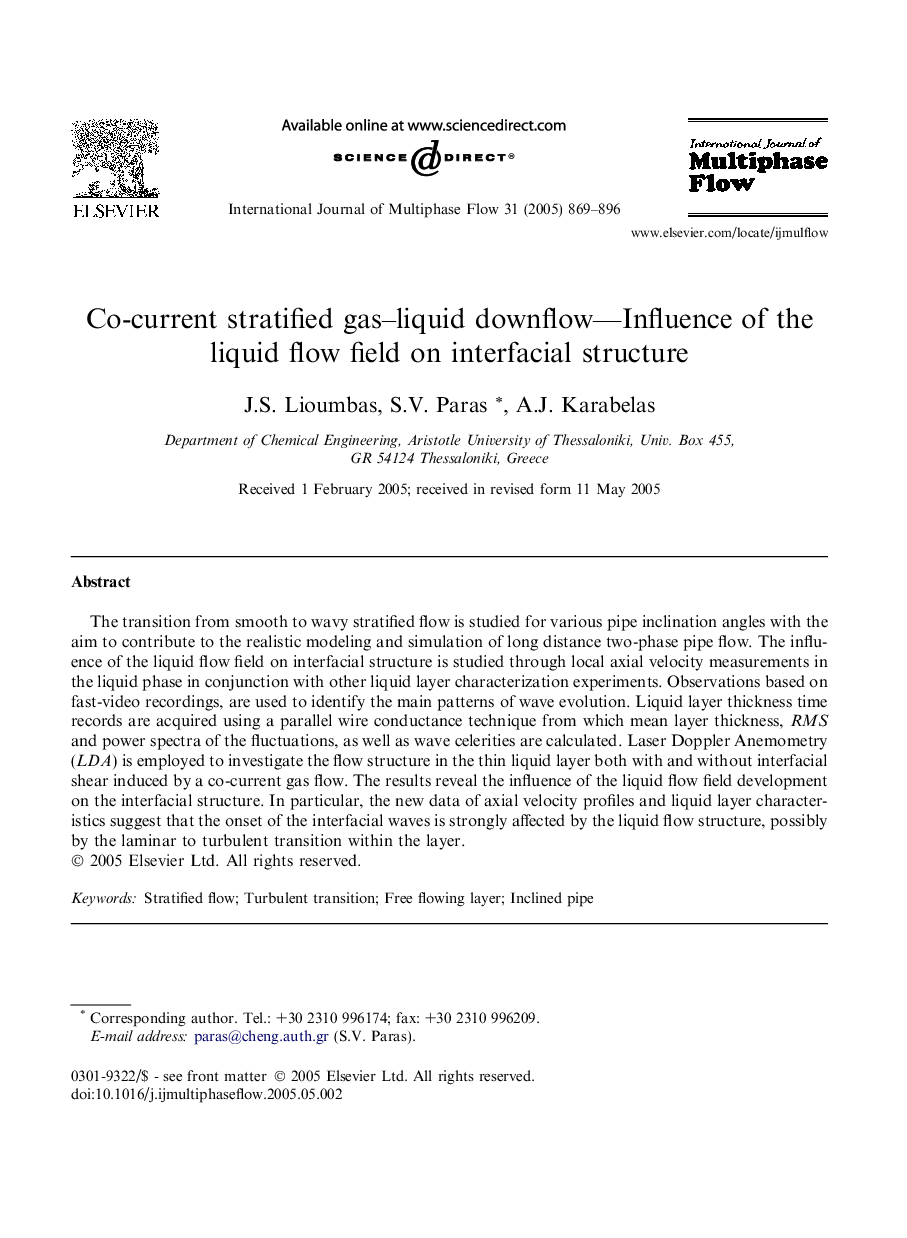| Article ID | Journal | Published Year | Pages | File Type |
|---|---|---|---|---|
| 9692370 | International Journal of Multiphase Flow | 2005 | 28 Pages |
Abstract
The transition from smooth to wavy stratified flow is studied for various pipe inclination angles with the aim to contribute to the realistic modeling and simulation of long distance two-phase pipe flow. The influence of the liquid flow field on interfacial structure is studied through local axial velocity measurements in the liquid phase in conjunction with other liquid layer characterization experiments. Observations based on fast-video recordings, are used to identify the main patterns of wave evolution. Liquid layer thickness time records are acquired using a parallel wire conductance technique from which mean layer thickness, RMS and power spectra of the fluctuations, as well as wave celerities are calculated. Laser Doppler Anemometry (LDA) is employed to investigate the flow structure in the thin liquid layer both with and without interfacial shear induced by a co-current gas flow. The results reveal the influence of the liquid flow field development on the interfacial structure. In particular, the new data of axial velocity profiles and liquid layer characteristics suggest that the onset of the interfacial waves is strongly affected by the liquid flow structure, possibly by the laminar to turbulent transition within the layer.
Related Topics
Physical Sciences and Engineering
Chemical Engineering
Fluid Flow and Transfer Processes
Authors
J.S. Lioumbas, S.V. Paras, A.J. Karabelas,
